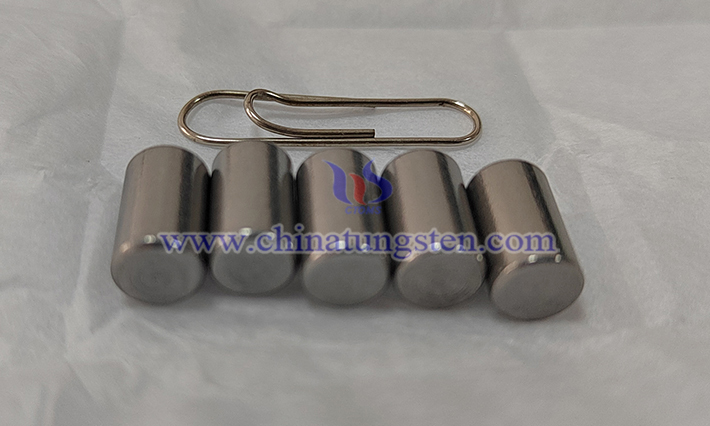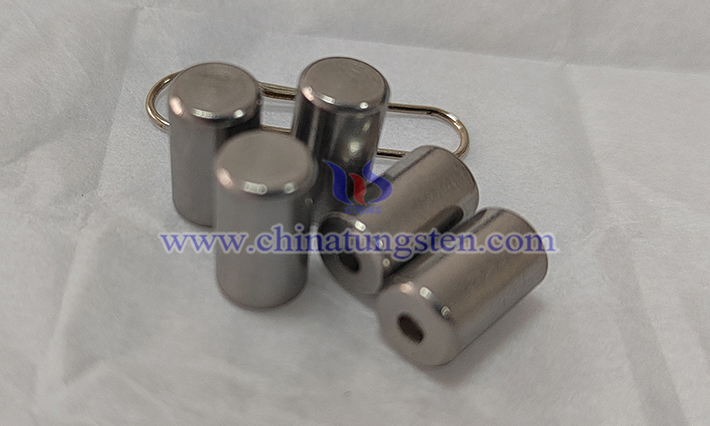Factors Affecting the Thermal Shock Resistance of Barium Tungsten Electrodes
- Details
- Category: Tungsten Information
- Published on Tuesday, 27 May 2025 17:52
The thermal shock resistance of barium tungsten electrodes is affected by many factors. The following is an analysis of the main influencing factors:
1. Material Composition and Purity
1.1 Barium Content: As a low work function material, barium can improve the electron emission performance of the electrode, but excessive or uneven barium distribution may cause internal stress concentration in the material and reduce thermal shock resistance.
1.2 Tungsten Matrix Characteristics: The grain size, purity and microstructure (such as grain boundary strength) of tungsten directly affect the mechanical strength and thermal stability of the electrode. Small and uniform grains usually help improve thermal shock resistance.
1.3 Additives: The addition of certain trace elements or oxides (such as lanthanum oxide and cerium oxide) can improve the toughness and thermal shock resistance of the tungsten matrix, but the amount of addition needs to be controlled to avoid side effects.

2. Microstructure
2.1 Porosity: Porosity in electrode materials reduces thermal conductivity, increases local thermal stress, and reduces thermal shock resistance. Optimizing the sintering process can reduce porosity.
2.2 Grain Boundary Characteristics: The strength and distribution of grain boundaries have an important influence on the extension of thermal shock cracks. Grain boundary strengthening (such as through doping or heat treatment) can improve thermal shock resistance.
2.3 Phase Distribution: The uniformity of the distribution of the second phase (such as barium compounds) in the barium tungsten electrode affects the matching of the thermal expansion coefficient, and uneven distribution may cause microcracks.
3. Thermal Expansion Coefficient
The thermal expansion coefficients of barium and tungsten are quite different, which may lead to thermal stress concentration under rapid temperature changes. Optimizing the material ratio or introducing a transition phase can alleviate the thermal expansion mismatch.

4. Manufacturing Process
4.1 Sintering Process: Sintering temperature, time and atmosphere (such as vacuum or reducing atmosphere) affect the density and microstructure of the electrode. High-temperature sintering can improve density, but too high a temperature may cause abnormal grain growth and reduce thermal shock resistance.
4.2 Forming Method: Forming processes such as powder metallurgy and isostatic pressing have an important impact on material uniformity and are directly related to thermal shock resistance.
4.3 Surface Treatment: Surface defects (such as cracks or roughness) will become the starting point of thermal shock cracks, and fine surface treatment can improve thermal shock resistance.
5. Use environment
5.1 Temperature Gradient: The rapid temperature change that the electrode is subjected to in a high-temperature working environment (such as a plasma or arc environment) will induce thermal stress. The greater the temperature gradient, the more severe the thermal shock damage.
5.2 Number of Cycles: The frequency and amplitude of thermal shock cycles will accelerate material fatigue and reduce service life.
5.3 Working Medium: Exposure of electrodes to corrosive gases or plasma may cause surface erosion and weaken thermal shock resistance.
6. Mechanical Properties
6.1 Fracture Toughness: Higher fracture toughness helps prevent the expansion of thermal shock cracks.
6.2 Thermal Conductivity: High thermal conductivity can quickly disperse heat and reduce temperature gradients, thereby improving thermal shock resistance.
6.3 Modulus of Elasticity: A lower modulus of elasticity reduces thermal stresses, but a balance must be struck between strength and toughness.
- Chinatungsten Online: www.tungsten.com.cn
- CTIA GROUP LTD: en.ctia.group
- Tungsten News & Price: www.ctia.com.cn
- Molybdenum News & Price: news.molybdenum.com.cn
- Tel.: 86 592 5129696; Email: sales@chinatungsten.com



 sales@chinatungsten.com
sales@chinatungsten.com